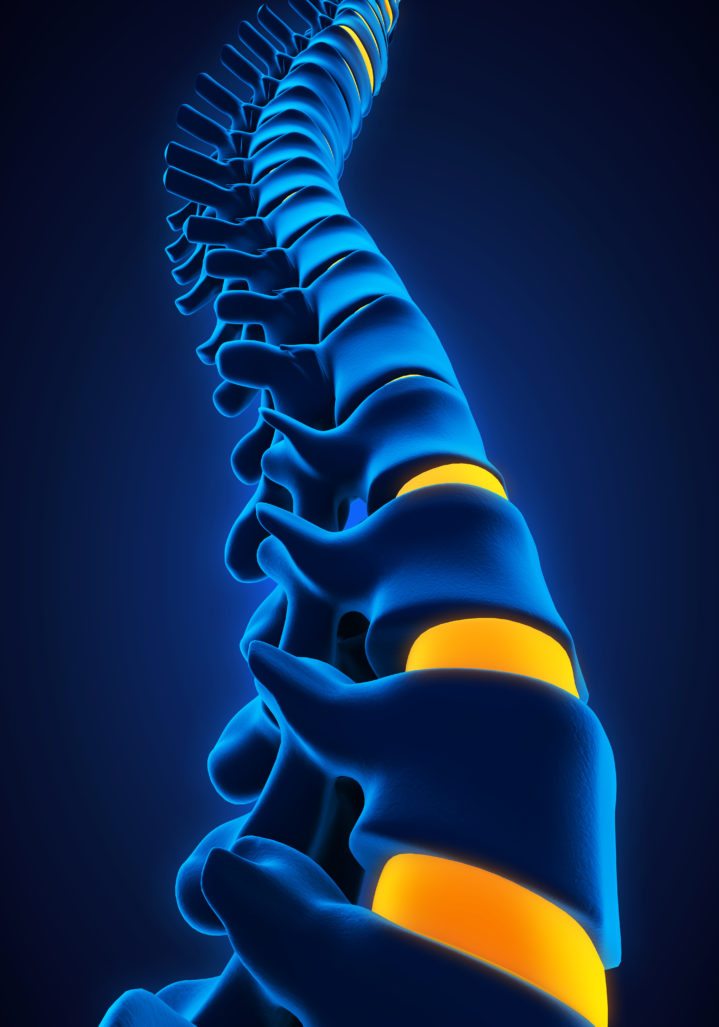Spinal stenosis is a narrowing of the openings within the vertebra of your lower back or neck. It can cause muscle weakness, chronic pain, numbness, and even headaches and dizziness. These symptoms can make it difficult to stay active yet maintaining an active lifestyle is necessary to prevent the worsening of the symptoms of spinal stenosis and further degeneration of the spine.
While the pain and dizziness can be 
exasperated by quick and jarring movements, there are still many exercises that you can do that will help to manage and treat the symptoms of spinal stenosis.
These exercises primarily work by strengthening the muscles and connective tissue in your back to provide better support to the spine, increasing oxygen and nutrient-rich blood flow to the muscles to help reduce inflammation and remove toxins, and maintaining and increasing flexibility of the spine.
Of course, there is an additional benefit in performing exercises, as they will help you to maintain a healthy weight (which further reduces stress on the spine), maintain and increase a range of motion, and strengthen your heart.
Recommended Exercises for Spinal Stenosis
All of these exercises are low impact though it is advised to talk with your health care provider before making any dramatic lifestyle changes and if you should have any questions about whether or not a particular exercise is appropriate for treating your spinal stenosis symptoms.
Water aerobics
Exercise in the water is particularly beneficial as the water serves to take pressure off the spine, while still strengthening and stretching the muscles in your back. Both water aerobics and swimming are helpful for lumbar (lower back) spinal stenosis and cervical (neck) spinal stenosis.
Walking and Biking
These are excellent forms of exercise for individuals who need to increase their physical activity gradually. Biking and walking on flat or mild terrain is ideal initially, with speed and distance covered being only so much as will get your heart rate up and muscles working -not so much that you are out of breath.
Knee to Chest Stretch
For this exercise, you may want to lay on a yoga mat or carpeted floor.
- Lay flat on your back.
- Slowly bend your knees and bring them to your chest.
- Hug them and allow the muscles in your back to relax.
- Hold this position for ten seconds then gently lower your legs back down to the floor.
Repeat three to five times in one session, performing multiple sessions throughout the day. Additionally, this exercise can be expanded to include three to five repetitions bringing one knee to your chest at a time, alternating legs. This exercise is particularly beneficial for lumbar (lower back) spinal stenosis.
Shoulder Shrugs
- Sit comfortably in a chair or cross-legged on the floor.
- Gently raise your shoulders so that the shoulder blades come together.
- Hold this position for two breaths, then lower your shoulders.
Repeat this exercise fifteen to twenty times and perform throughout the day. Alternately, this exercise can be performed by raising the shoulders and then rolling them backward and back to the starting position. It is not necessary to hold the position, rather it is the movement that provides the benefit. Do three sets of ten repetitions. This exercise is most helpful to those with cervical (neck) spinal stenosis.
Prone Cobra
This exercise may be more difficult for individuals who are severely overweight but provides substantial benefits in strengthening the muscles throughout the back.
- Lay face down on the floor with arms back along your sides.
- Touch the tip of your tongue to the roof of your mouth.
- Bring your shoulder blades together and raise your arms back and off the floor.
- Simultaneously, arch your back toward the floor, bringing your head up and lifting your legs.
- Keep your arms and legs straight, eyes forward.
- Hold this position for ten seconds; repeat ten times or as many as you are able.
Your healthcare provider will be able to provide you with further exercises to assist in treating your spinal stenosis symptoms. They can also provide you with targeted physical exercises that will be able to further assist in managing symptoms and diminishing the likelihood of injury due to spinal stenosis.
Additional Helpful Measures
In conjunction with the above exercises, there are some further steps you can take to help manage and treat your spinal stenosis symptoms, as well as prevent injury.
- Ensure that you can sleep comfortably, with your back properly supported. This may require an investment in a better mattress, but this is an important investment in your health and comfort.
- Maintain good posture. Habitually slouching creates excessive stress on the muscles in your back which increases the pressure on your spine. This can contribute to pain, tingling sensations, and numbness.
- Use proper body mechanics. When lifting even mildly heavy objects, take care to ensure that your posture is correct. Always lift with your legs, not your back, and avoid twisting while lifting to prevent debilitating injury.
Managing the symptoms of your spinal stenosis is an ongoing effort, yet it can help to reduce the need for surgery. It also helps to reduce the risk of severe injury to your back when engaged in physical activity due to weakened back muscles and a stressed spine.
